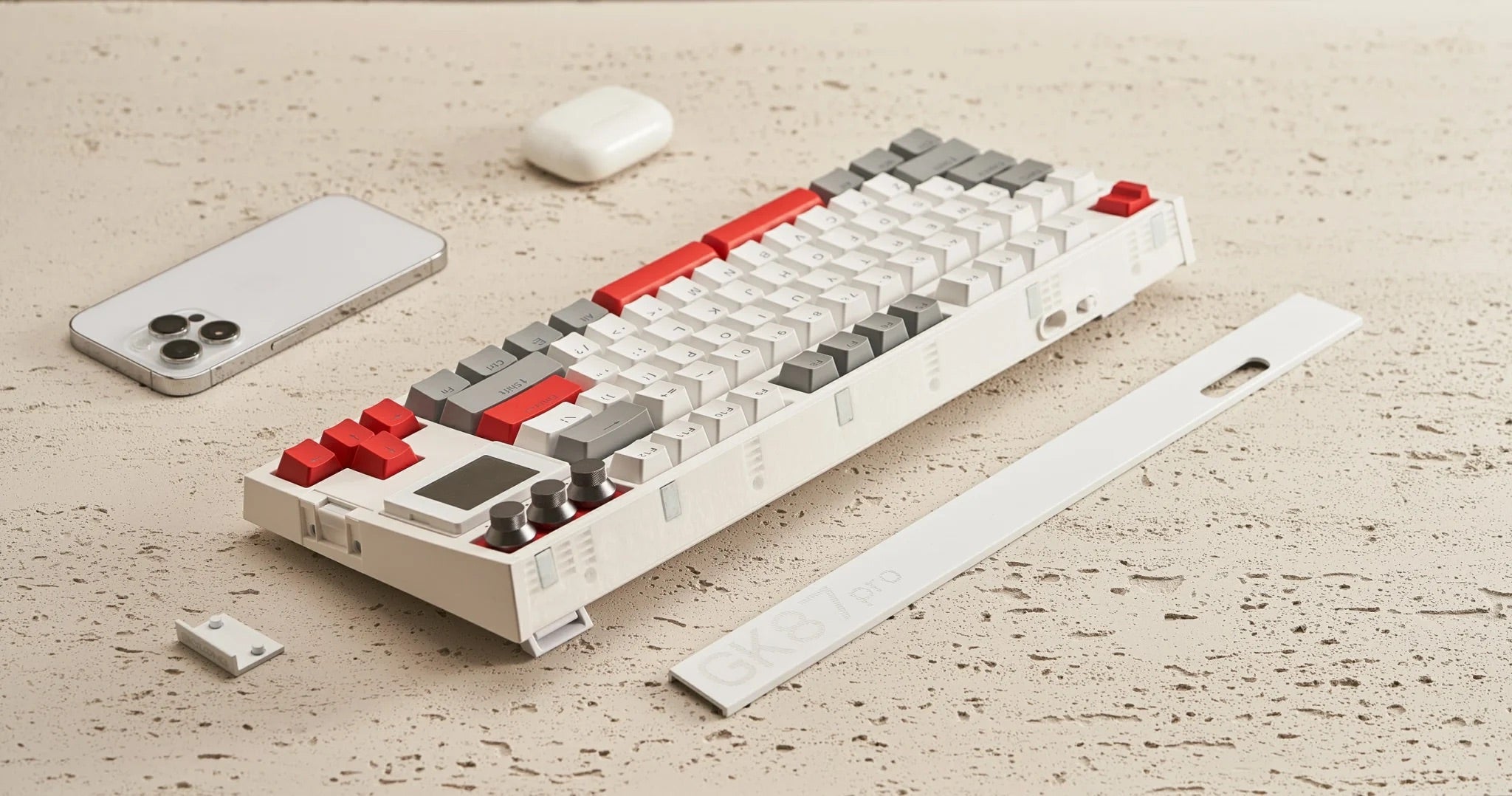Pre-Built vs. Barebone Keyboards: What’s the Difference?
Mechanical keyboards have become increasingly popular due to their durability, customizability, and satisfying typing experience. If you’re new to the scene, you’ve likely encountered two common options: pre-built and barebone keyboards. While they might look similar at first glance, they cater to vastly different needs and preferences. This blog will break down the differences between pre-built and barebone keyboards to help you decide which option suits your typing style and customization goals.
What is a Pre-Built Keyboard?
A pre-built keyboard comes fully assembled and ready to use out of the box. It includes all the essential components:
-
Switches: Installed on the board and paired with the keycaps.
-
Keycaps: Usually made of ABS or PBT plastic, covering all necessary legends.
-
PCB (Printed Circuit Board): Pre-installed with components for plug-and-play functionality.
-
Case: Provides the structural body for the keyboard, often made of plastic or metal.
-
Stabilizers: Already installed under larger keys like the spacebar and enter key.
Advantages of Pre-Built Keyboards
-
Ease of Use: No assembly is required; you can start typing immediately.
-
Convenience: Ideal for beginners or those who don’t want to spend time researching parts.
-
Cost-Effective: Often cheaper than custom options, especially for entry-level models.
Disadvantages of Pre-Built Keyboards
-
Limited Customization: You’re restricted to the manufacturer’s design, switches, and keycap options.
-
Quality Variability: Some pre-built models use lower-quality components to cut costs.
-
Less Personalization: You have minimal control over the feel and sound of your keyboard.
What is a Barebone Keyboard?
A barebone keyboard, also known as a DIY or kit keyboard, is a partially assembled board that allows users to add their own switches and keycaps. A typical barebone keyboard includes:
-
PCB and Case: These come pre-assembled, forming the skeleton of the keyboard.
-
Plate: Holds the switches in place and provides structural support.
-
Stabilizers: Often included but may require adjustment or replacement for optimal performance.
Advantages of Barebone Keyboards
-
Complete Customization: You can choose every aspect, from switches to keycaps, to create your perfect typing experience.
-
Higher Quality Components: Barebone kits often use premium materials for the case, PCB, and stabilizers.
-
Upgradeable: Hot-swappable options allow you to replace switches without soldering, giving you endless flexibility.
Disadvantages of Barebone Keyboards
-
Higher Initial Cost: While the barebone itself might be affordable, additional components can add up.
-
Time and Effort: Assembly requires research and manual setup, which might be overwhelming for beginners.
-
No Instant Gratification: It’s not ready to use out of the box; you’ll need to source and install parts first.
Which One Should You Choose?
The choice between a pre-built and barebone keyboard boils down to your preferences, experience level, and willingness to tinker.
Choose a Pre-Built Keyboard If:
-
You’re new to mechanical keyboards and want something easy to use.
-
Customization isn’t a priority for you.
-
You prefer a budget-friendly, ready-to-use option.
Choose a Barebone Keyboard If:
-
You enjoy DIY projects and want a fully personalized keyboard.
-
You’re looking for higher-quality components and unique aesthetics.
-
You’re willing to invest time and money for a tailored typing or gaming experience.
Conclusion
Both pre-built and barebone keyboards have their merits, catering to different types of users. A pre-built keyboard is perfect for those who want simplicity and convenience, while a barebone keyboard offers unmatched customization and quality for enthusiasts. Whether you prioritize plug-and-play functionality or a hands-on building experience, the mechanical keyboard world has something for everyone. Explore your preferences, and enjoy the journey to finding your ideal setup!






